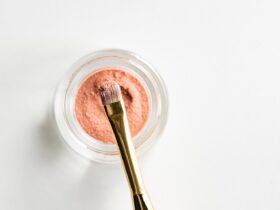Perfume, far beyond a mere fragrance, is a carefully constructed composition designed to evoke emotions, memories, and even influence perceptions. The way we apply perfume, particularly the use of atomizers, plays a crucial role in shaping this sensory experience and influencing our psychological response to the scent. This article delves into the intricate psychology behind perfume application, focusing on the impact of atomizers on sensory perception, emotional connection, and overall satisfaction.
The Science of Scent and Emotion
The sense of smell is uniquely intertwined with the brain’s limbic system, the region responsible for emotions, memories, and motivation. Unlike other senses that are processed through the thalamus, olfactory information travels directly to the amygdala (emotional processing) and the hippocampus (memory formation). This direct connection explains why certain scents can instantly trigger vivid memories or strong emotional reactions. The scent of lavender might evoke feelings of relaxation and peace, while the smell of freshly baked bread could transport you back to your grandmother’s kitchen.
Perfume houses understand this powerful connection and meticulously craft fragrances with specific notes and accords to elicit desired emotional responses. The top notes are designed to be the initial, attention-grabbing scents, while the heart notes form the core of the fragrance and provide its character. Finally, the base notes are the long-lasting scents that create depth and complexity. The interplay of these notes, delivered through a specific application method, significantly influences the overall psychological impact of the perfume.
The Atomizer: A Tool for Controlled Delivery
The atomizer, a common fixture in modern perfume bottles, is more than just a convenient dispensing mechanism. It’s a carefully engineered device that transforms liquid perfume into a fine mist, optimizing its dispersion and influencing its sensory impact. Before atomizers, perfumes were often dabbed onto the skin, resulting in a concentrated application that could be overpowering and lack nuance.
The atomizer offers several key advantages:
- Even Distribution: The fine mist ensures a more uniform distribution of the fragrance across the skin, preventing concentrated patches and allowing the different notes to unfold in a more balanced manner.
- Optimized Evaporation: The increased surface area of the mist allows for faster evaporation, releasing the fragrance molecules into the air and creating a more immediate and impactful scent cloud.
- Controlled Dosage: Atomizers allow for precise control over the amount of perfume applied, preventing over-application and ensuring a more subtle and sophisticated scent profile. This is crucial, as over-application can lead to olfactory fatigue and a negative perception, both for the wearer and those around them.
- Enhanced Sensory Experience: The tactile sensation of the mist on the skin adds another layer to the sensory experience, creating a feeling of luxury and indulgence.
The quality of the atomizer itself also plays a significant role. A well-designed atomizer produces a fine, even mist with minimal drips or sputtering. A poorly designed atomizer can result in an uneven spray, wasted perfume, and a less enjoyable application experience.
Psychological Effects of Application Technique
The way we apply perfume, in conjunction with the atomizer, can significantly impact our psychological response to the fragrance. Different application techniques can influence the intensity, longevity, and overall perception of the scent.
Strategic Placement: Applying perfume to pulse points (wrists, neck, behind the ears, inside elbows) leverages body heat to gradually release the fragrance throughout the day. These areas tend to be warmer, which helps to diffuse the scent more effectively. Psychologically, this creates a subtle but consistent reminder of the fragrance, providing a sense of comfort and confidence.
Layering: Layering perfumes, or using scented lotions and body washes in conjunction with a perfume, can create a more complex and personalized scent profile. This allows individuals to express their unique style and create a fragrance that is truly their own. The act of layering itself can be a ritualistic and enjoyable experience, further enhancing the psychological connection to the scent.
Distance and Coverage: Holding the atomizer a reasonable distance from the skin (around 6-8 inches) ensures a broader and more even application. Spraying directly onto clothing can alter the fragrance profile, as the fabric can absorb certain notes and prevent others from fully developing. Psychologically, a wider spray can create a more enveloping and comforting scent cloud, while a concentrated application might feel more intense and assertive.
The Ritual of Application: For many, applying perfume is more than just a practical step in their daily routine; it’s a ritual. The act of carefully selecting a fragrance, holding the elegant bottle, and gently spritzing the scent onto the skin can be a mindful and enjoyable experience. This ritualistic aspect can enhance the positive emotions associated with the fragrance and contribute to a sense of well-being.
Sensory Experience Beyond Smell
While the primary focus of perfume is on the sense of smell, the atomizer also contributes to the overall sensory experience through other modalities. The visual appeal of the bottle, the tactile sensation of holding it, and even the sound of the atomizer spraying can all contribute to the overall perception of luxury and quality.
The visual design of the perfume bottle is often carefully considered to reflect the fragrance’s character and target audience. A sleek, minimalist bottle might convey a sense of modernity and sophistication, while an ornate, vintage-inspired bottle might evoke feelings of nostalgia and romance. The color of the perfume itself can also influence perception, with warmer colors like amber and gold suggesting richness and warmth, while cooler colors like blue and green might suggest freshness and cleanliness.
The weight and texture of the bottle, the smoothness of the atomizer, and even the sound it makes when pressed can all contribute to the overall sensory experience. A well-crafted perfume bottle feels luxurious and substantial, enhancing the feeling of indulgence and sophistication. Even the slight cooling sensation of the perfume mist on the skin adds to the multi-sensory experience.
Conclusão
The psychology of perfume application, particularly the use of atomizers, is a complex and multifaceted subject. It highlights how the way we experience a scent is not solely determined by its composition, but also by the delivery method, application technique, and the overall sensory experience. The atomizer, as a carefully engineered tool, plays a critical role in optimizing scent dispersion, controlling dosage, and enhancing the tactile and visual aspects of perfume application. By understanding the psychological effects of different application techniques and paying attention to the sensory details, individuals can maximize their enjoyment of perfume and harness its power to evoke emotions, create memories, and express their unique identity.
Perguntas frequentes (FAQs)
















Deixe uma resposta